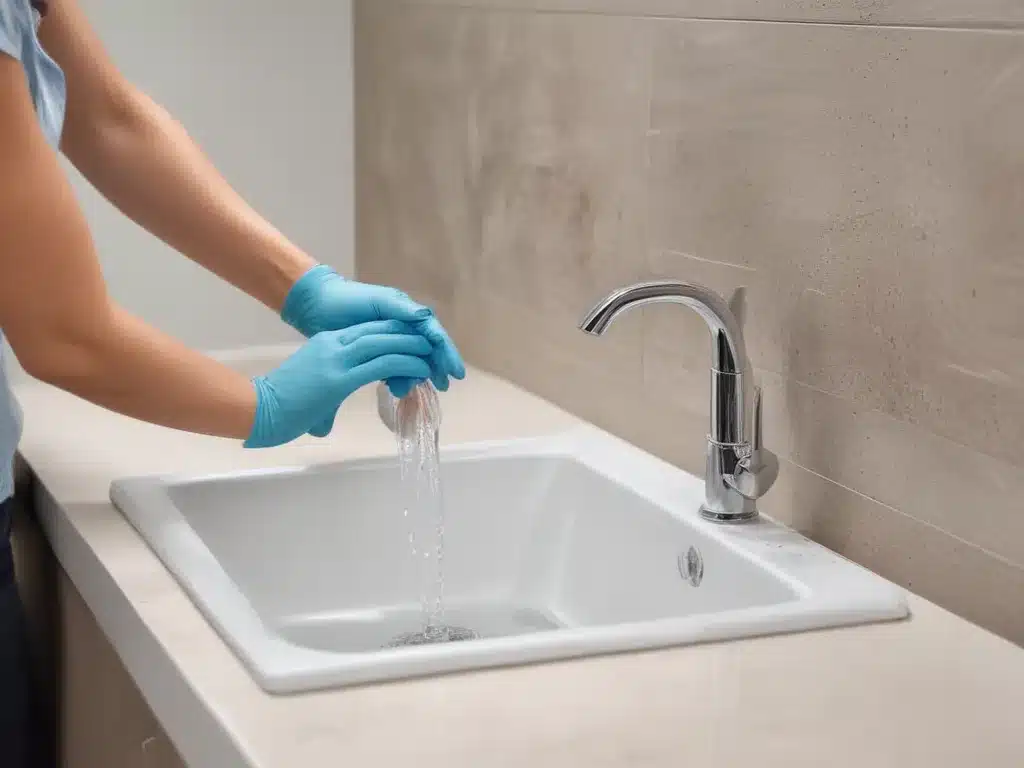Introduction
In our daily lives, we come into contact with numerous surfaces that multiple people touch. These high-touch surfaces can harbor harmful microorganisms, such as bacteria and viruses, increasing the risk of transmitting illnesses. To maintain a safe and healthy environment, it is crucial to sanitize and disinfect these surfaces regularly. In this comprehensive guide, we will explore the importance of sanitizing and disinfecting high-touch surfaces, the differences between these processes, and the most effective methods to ensure a clean and hygienic space.
What are High-Touch Surfaces?
High-touch surfaces (subject) are areas (predicate) that are frequently touched or handled (object) by multiple people. These surfaces (subject) can act (predicate) as potential breeding grounds for pathogens (object). Some common examples of high-touch surfaces include:
- Door handles and knobs
- Light switches
- Countertops and tabletops
- Handrails
- Desks and chairs
- Toilet flush handles
- Faucets and sinks
- Elevator buttons
- Shared electronic devices (keyboards, mice, touchscreens)
These surfaces (subject) can harbor (predicate) various microorganisms (object), such as bacteria, viruses, and fungi, which can be easily transmitted from person to person through contact.
The Importance of Sanitizing and Disinfecting
Sanitizing and disinfecting high-touch surfaces (subject) help reduce (predicate) the risk of illness transmission (object). Regular cleaning and disinfection of these areas can:
- Eliminate harmful pathogens
- Prevent the spread of infectious diseases
- Maintain a safe and healthy environment
- Promote overall well-being
Neglecting to sanitize and disinfect high-touch surfaces (subject) can lead (predicate) to the spread of illnesses (object), increased absenteeism, and reduced productivity in workplaces, schools, and other public spaces.
Sanitizing vs. Disinfecting
While the terms “sanitizing” and “disinfecting” are often used interchangeably, they refer to different processes with distinct objectives.
Sanitizing
Sanitizing (subject) is the process (predicate) of reducing the number of microorganisms (object) on a surface to safe levels, as determined by public health standards. Sanitizers (subject) work (predicate) by killing or inactivating a significant portion of the microorganisms present (object). However, they may not eliminate all pathogens, especially those that are particularly hardy or resistant.
Disinfecting
Disinfecting (subject) involves (predicate) the use of chemical disinfectants or physical processes (object) to eliminate a wide range of microorganisms, including bacteria, viruses, and fungi, from surfaces or objects. Disinfectants (subject) are designed (predicate) to kill or inactivate most known pathogens (object), providing a higher level of protection compared to sanitizers.
While both processes are important for maintaining a clean and hygienic environment, disinfecting is typically recommended for high-risk areas or when dealing with known or suspected contamination by harmful pathogens.
Effective Methods for Sanitizing and Disinfecting High-Touch Surfaces
Several methods and products can be used to effectively sanitize and disinfect high-touch surfaces. Here are some common approaches:
Chemical Disinfectants
Chemical disinfectants (subject) are effective (predicate) against a wide range of microorganisms (object). Some commonly used disinfectants include:
- Quaternary ammonium compounds (quats)
- Chlorine-based disinfectants (e.g., bleach)
- Alcohols (e.g., isopropyl alcohol)
- Hydrogen peroxide-based solutions
It is essential to follow the manufacturer’s instructions carefully, including dilution rates, contact times, and proper application methods, to ensure the disinfectant’s effectiveness.
Electrostatic Spraying
Electrostatic spraying (subject) is a method (predicate) that uses an electrostatic charge to disperse disinfectants (object) evenly across surfaces. The charged particles (subject) adhere (predicate) to surfaces (object), providing comprehensive coverage and reaching hard-to-reach areas.
Ultraviolet (UV) Light Disinfection
UV light disinfection (subject) utilizes (predicate) short-wavelength ultraviolet radiation (object) to inactivate and destroy microorganisms. This method (subject) is effective (predicate) against a wide range of pathogens (object), including bacteria, viruses, and fungi.
Steam Cleaning
Steam cleaning (subject) involves (predicate) the use of high-temperature steam (object) to sanitize and disinfect surfaces. The high heat (subject) kills (predicate) most microorganisms (object) and can effectively penetrate porous surfaces.
Best Practices for Sanitizing and Disinfecting High-Touch Surfaces
To ensure effective sanitization and disinfection of high-touch surfaces, it is essential to follow these best practices:
- Read and follow the product label instructions carefully.
- Use appropriate personal protective equipment (PPE), such as gloves and eye protection.
- Clean surfaces before disinfecting to remove visible dirt and grime, as disinfectants work best on clean surfaces.
- Allow the disinfectant to remain on the surface for the recommended contact time before wiping or rinsing.
- Regularly clean and replace cleaning and disinfecting equipment (e.g., mop heads, cloths) to prevent cross-contamination.
- Establish a cleaning and disinfection schedule for high-touch surfaces, with increased frequency in high-risk areas or during outbreaks.
- Provide training and education to staff or individuals responsible for cleaning and disinfecting to ensure proper techniques and product usage.
Hiring Professional Biohazard Cleaning Services
In certain situations, such as when dealing with biohazardous materials or large-scale contamination, it may be advisable to hire professional biohazard cleaning services. Companies like Adam Cleaning specialize in biohazard remediation and can ensure proper sanitization and disinfection using advanced techniques and equipment.
Hiring professional biohazard cleaning services (subject) can provide (predicate) peace of mind and ensure thorough decontamination (object) in high-risk scenarios, protecting the health and safety of individuals and the environment.
Conclusion
Sanitizing and disinfecting high-touch surfaces is a crucial step in maintaining a safe and healthy environment. By understanding the differences between these processes and following best practices, we can effectively reduce the risk of illness transmission and promote overall well-being. Regular cleaning and disinfection, combined with proper hygiene practices, can create a safer and more hygienic space for everyone.







